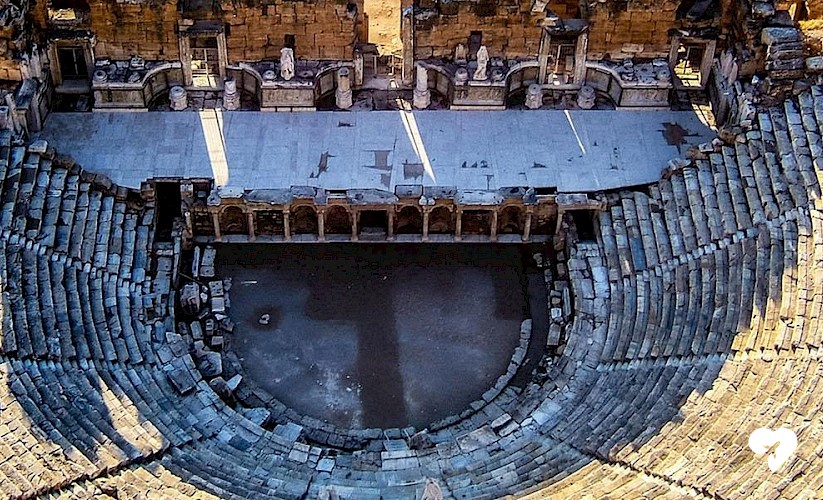Hierapolis-Pamukkale is a UNESCO World Heritage Site, and with good reason! If Pamukkale were "only" one of nature’s marvels, with dozens of pools lying in white travertines as they cascade down to the ground, then it would still be one of the world’s most beautiful sites. But what makes Pamukkale all the more special is the ancient city of Hierapolis located right on top of the travertines, and then the natural beauty and thermal springs immediately surrounding the travertines, including Cleopatra’s pool.
This truly is a bucket list must-see for anyone who loves to travel, so without further ado let’s get to what you gotta do once you get there!
Getting There And Staying There
Pamukkale is located inland a few hours away from the coast, either from the Aegean or the Mediterranean. This means that many people visit it on day trips from a hotel in Fethiye or near Ephesus. However, 3-4 hours in the hot sun during the daytime is often not the ideal way to visit this stunning spot. We’d recommend a tour that either allows for at least sunset at Pamukkale, or alternatively just stay at any of the dozens of nearby hotels. Take your time to bathe in the waters and bask in the beauty of the nature and history that are so spectacular here!
Those Travertines!

The cotton-white travertines of Pamukkale are practically surreal, as hot pools form on each shelf cascading down like a waterfall from the ancient city of Hierapolis on down to the ground below.
The travertines have been formed over millennia by the precipitation of calcium at the mouth of the hot springs, causing sediment to form. White travertines are the purest form of travertine in the world, meaning that the minerals you’ll find in the hot springs of Pamukkale are uncontaminated by anything else, truly purifying your body in the way that few other places on Earth can claim.
The terrace pools are largely closed to protect their beauty, but a couple pools are open for people to walk in. You’ll feel the sediment changing under your feet, meaning that you’re essentially walking on fresh rock that’s never been walked on before. As your feet kick up the limestone, the next person to come into the pools will have their own fresh rock to walk upon!
Healing Powers

The healing power of Pamukkale have been known for Millennia, and indeed the travertines have been a source of wellness for over 2,000 years. People with allergies or inflammations report quasi-miraculous results after bathing in the travertine pools, as the calcium-laced waters seep into your pores. Visiting in the summer is particularly advantageous, as sweating opens up your pores and allows the minerals to seep in.
As you hop from pool to pool and spring to spring, you’ll feel the stress and pain drift away from your body, as people have felt since the city of Hierapolis was original built for just this purpose.
The Ancient City Of Hierapolis

It’s no surprise that Hierapolis was known as having some of the most wonderful baths in the ancient world, any many of them are still practically intact today, along with a gymnasium, library, temples, and more in the acropolis.
The city was known as a healing center, where doctors would heal patients in the thermal waters. A massive city arose out of this center as people flocked to the city, and as lifespans extended beyond those in other ancient cities.
When you visit, you’ll walk along the main street of the city, through the Fontinus Gate, past the Temple of Apollo, past the oldest local sanctuary of Pluto’s Gate, past the Nymphaeum, past the Necropolis (and the Northern Necropolis), past the Martyrium, and finally take a rest in the spectacularly intact theater you’ll find.
Cleopatra's Pool

Swim in a massive hot spring as you wade past ancient Roman columns and bathe in the healing waters that we preferred by Cleopatra herself to the Travertines located on the other side of the hill. This really is a treat, an ancient spring that bears the traces and the name of its storied past. What a way to heal!
Believe it or not, there’s more to do in and around Pamukkale, including the natural underground Kaklik Cave or the ancient city of Aphrodisias which is nearby (and itself a UNESCO World Heritage Site – one of the as yet undiscovered gems of Turkey!). So plan your trip and make sure you’ve got at least a full day at one of the most memorable spots you’ll ever visit anywhere in the world.
